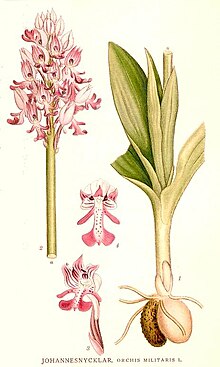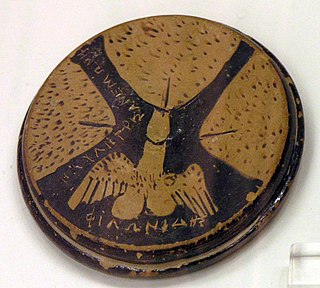This a list of species, genera, and other taxa named after human genitals.
Contents
- Plants
- Families
- Genera
- Species
- Varieties
- Fungi
- Orders
- Families 2
- Genera 2
- Species 2
- Animals
- Genera 3
- Species 3
- Subspecies
- General
- References

This a list of species, genera, and other taxa named after human genitals.





In taxonomy, binomial nomenclature, also called binary nomenclature, is a formal system of naming species of living things by giving each a name composed of two parts, both of which use Latin grammatical forms, although they can be based on words from other languages. Such a name is called a binomial name, a binomen, binominal name, or a scientific name; more informally it is also historically called a Latin name. In the ICZN, the system is also called binominal nomenclature, "binomi'N'al" with an "N" before the "al", which is not a typographic error, meaning "two-name naming system".

The perineum in mammals is the space between the anus and the genitals. The human perineum is between the anus and scrotum in the male or between the anus and vulva in the female. The perineum is the region of the body between the pubic symphysis and the coccyx, including the perineal body and surrounding structures. The perineal raphe is visible and pronounced to varying degrees. The perineum is an erogenous zone. This area is also known as the taint or gooch in American slang.

Pussy is a term used as a noun, an adjective, and—in rare instances—a verb in the English language. It has several meanings, as slang, as euphemism, and as vulgarity. Most commonly, it is used as a noun with the meaning "cat", "coward", or "weakling". In slang usage, it can mean "vulva or vagina" and less commonly, as a form of synecdoche, meaning "sexual intercourse with a woman". Because of its multiple senses including both innocent and vulgar connotations, pussy is often the subject of double entendre.

The Eurasian scops owl, also known as the European scops owl or just scops owl, is a small owl in the typical owl family Strigidae. Its breeding range extends from southern Europe eastwards to southern Siberia and the western Himalayas. It is migratory, wintering in Africa south of the Sahara.

The yellow bittern is a small bittern. It is of Old World origins, breeding in the northern Indian Subcontinent, east to the Russian Far East, Japan and Indonesia. It is mainly resident, but some northern birds migrate short distances. It has been recorded as a vagrant in Alaska and there is a single sighting in Great Britain, from Radipole Lake, Dorset on November 23, 1962 – however, the British Ornithologists' Union has always considered this occurrence to be of uncertain provenance and currently it is not accepted onto the official British List.

A cloaca, pl.: cloacae, is the rear orifice that serves as the only opening for the digestive, reproductive, and urinary tracts of many vertebrate animals. All amphibians, reptiles, birds, and a few mammals, have this orifice, from which they excrete both urine and feces; this is in contrast to most placental mammals, which have two or three separate orifices for evacuation and reproduction. Excretory openings with analogous purpose in some invertebrates are also sometimes called cloacae. Mating through the cloaca is called cloacal copulation and cloacal kissing.
A hybrid word or hybridism is a word that etymologically derives from at least two languages. Such words are a type of macaronic language.
Ad astra is a Latin phrase meaning "to the stars". The phrase has origins with Virgil, who wrote in his Aeneid: "sic itur ad astra" and "opta ardua pennis astra sequi". Another origin is Seneca the Younger, who wrote in Hercules: "non est ad astra mollis e terris via".
Profanity in Finnish is used in the form of intensifiers, adjectives, adverbs and particles. There is also an aggressive mood that involves omission of the negative verb ei while implying its meaning with a swear word.

The snowy sheathbill, also known as the greater sheathbill, pale-faced sheathbill, and paddy, is one of two species of sheathbill. It is usually found on the ground. It is the only land bird native to the Antarctic continent.

A penis is a male sex organ that is used to inseminate female or hermaphrodite animals during copulation. Such organs occur in both vertebrates and invertebrates, but not in all male animals.

A phallus is a penis, an object that resembles a penis, or a mimetic image of an erect penis. In art history, a figure with an erect penis is described as ithyphallic.

In Greek mythology, Priapus is a minor rustic fertility god, protector of livestock, fruit plants, gardens, and male genitalia. Priapus is marked by his oversized, permanent erection, which gave rise to the medical term priapism. He became a popular figure in Roman erotic art and Latin literature, and is the subject of the often humorously obscene collection of verse called the Priapeia.
Trypauchen vagina, commonly known as the burrowing goby, is a species of eel goby found in the Indo-Pacific region. It has an elongated body about 20 to 22 cm in length. It is reddish-pink in color and possesses distinctive pouches in the upper edges of its gill covers. It lives in burrows in the silty and muddy bottoms of its marine and brackish habitats. It has reduced eyes that are entirely covered with skin and the anterior portion of its head is protected by thick flesh. Both adaptations aid it in digging its burrows.

Phallichthys is a genus of poeciliids native to Central America. They are hardy fish which inhabit stagnant and slow-flowing waters, making them well-suited to fishkeeping.
Xenophallus umbratilis is a species of poeciliid fish native to the countries of Nicaragua and Costa Rica. This species grows to a length of 4.5 centimetres (1.8 in) SL. It is the only known member of the genus Xenophallus.